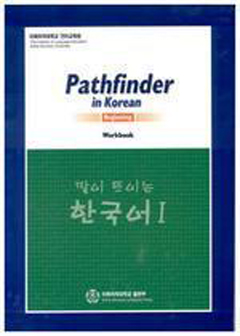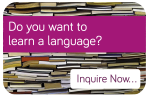Pathfinder in Korean: Beginning is a standard classroom book that takes the usual approach of learning a language. It’s a good start to learning Korean since it provides students with the basics in order to help them establish a solid foundation in the language.
"Teachers might find some use in this book since it helps students develop all four language skills. But as mentioned before, I would highly recommend using this book as a complementary material and not as the central course book in a class."
Overview
It’s very important to note that this book is completely in Korean. With the exceptions of the assignment titles (Practice, Reading, Tasks etc.) everything is written in Korean so it’s a must to be able to read and understand Hangul, or at least have some knowledge of the writing system. Pathfinder is a typical classroom style textbook with its activities, dialogues, practice exercises, and reading tasks; the book also follows a very structured pattern in each chapter. There are about 15 chapters that focus on common themes like meeting people, hobbies, and shopping, but since everything is completely written in Korean, beginner students might not be able to work on the activities in each chapter.
More advanced students might also notice that the language taught in each chapter is extremely formal. The more casual language and phrases aren’t actually provided until the last parts of the book and I feel that this might be one of the book’s weak points. Students might also need assistance from a tutor or teacher in certain chapters because they will run into difficult vocabulary, formal forms of certain words, and at times they may even need the occasional translation that the book doesn’t provide. Many of the activities in the book also call for group work so I would not recommend this book for independent learners. Even the most self-motivated learners will find this book quite challenging.
Pros: •Pretty easygoing book, presuming the student can understand and read Korean.
•Lots of activities are provided.
•The book is heavy on vocabulary.
•There is a strong focus on learning formal and polite phrases.
Cons:
•The entire book is in Korean and requires students to be at an intermediate reading level.
•Conversational Korean is not focused on; most of the language is extremely formal.
•The book cannot be studied alone, a teacher or tutor is completely necessary.
•Cannot be used on its own, may need complementary material.

Recommended For:
•Group Korean classes of students who can already read Korean.
•Students who prefer to learn through exercises, drills, and repetitive activities.
•Teachers who want to teach their students through a complete immersion approach.
Overall, this could be a somewhat useful book if you can already read Korean. If this is not the case, it would be wise to avoid this book or come back to it once you have reached an intermediate reading level. Teachers might find some use in this book since it helps students develop all four language skills. But as mentioned before, I would highly recommend using this book as a complementary material and not as the central course book in a class.




